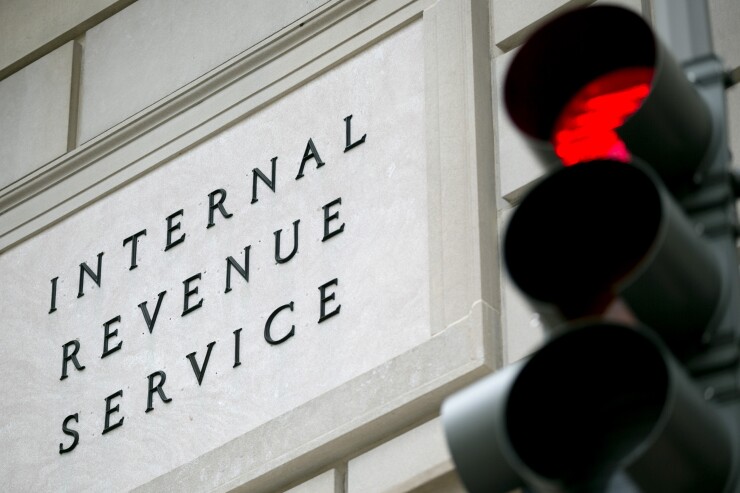IRS urged to strengthen compliance on pandemic tax breaks

Congress gave billions of dollars in tax credits to employers in response to the COVID-19 pandemic that helped pay for providing paid sick and family leave and retaining employees, but now the IRS needs to step up its compliance efforts, according to a new report.
The report, released Tuesday by the Government Accountability Office, examined the impact of the various pandemic relief laws passed by Congress since 2020, including the CARES Act and the Families First Coronavirus Response Act. Provisions in those laws established paid sick and family leave credits, the Employee Retention Credit and payroll tax deferrals. The IRS managed to implement those complex provisions despite facing delays caused by facility closures and other challenges. As the new laws were enacted by Congress, the IRS continued to revise the relevant employment tax returns and guidance.
The paid sick and family leave credits and Employee Retention Credits for 2020 totaled about $20.7 billion, including $9.8 billion for the leave credits claimed by over 1.5 million employers and $10.9 billion for the ERC claimed by 199,834 employers. Payroll tax deferrals totaled about $123.6 billion claimed by over 1 million employers. The totals were probably even higher last year, according to preliminary data.

Andrew Harrer/Bloomberg
Some of the top industry sectors claiming leave credits and ERCs were those most affected by the pandemic, with the manufacturing sector claiming the second highest amount of leave credit dollars (about 13%) and the accommodation and food services sector claiming the highest amount of ERC dollars (approximately 15%).
The IRS took some steps to identify and plan for compliance risks associated with the leave credits and the ERC, the GAO noted. Both types of credits expired last year but will be subject to examination by the IRS for several years after filing. The report found the IRS could strengthen its efforts by expanding its use of some of its project management practices. The IRS’s compliance objectives didn’t evolve to reflect statutory changes made after the CARES Act, aren’t measurable, and don’t include criteria to measure success. “A comprehensive and cohesive compliance plan would help guide IRS efforts to ensure that it adequately identifies and addresses compliance risks,” said the report.
In preliminary data, GAO found 337 filings, totaling $100 million, from employers that were established in April 2020 or later, but then stopped filing employment tax returns. IRS screening filters flagged more than 65% of these filers for review, but the GAO said those controls may still overlook ineligible entities because they don’t consider certain factors, such as refund amounts and employer establishment dates.
One area of potential fraud was employer identification numbers. Although the employment tax return screening process flagged many of the returns identified with potentially ineligible credit claims, the report said it’s possible some returns from fabricated EINs may have passed through the filters and received refunds. Annual employment tax returns, for example, are subject to fewer filters. In addition, none of the filters contains specific criteria to identify entities established after the enactment of the Families First Coronavirus Response Act and the CARES Act. IRS officials shared a list of compliance areas that are under consideration for using computerized filters to identify potential noncompliance specific to the tax credits, but those areas are still under development, and the IRS did not have any further information in the most recent compliance plan. The GAO recommended that the IRS could bolster its controls by using dates from the relevant legislation, refund amount and filing data, the establishment date for the employer, and other variables in filters to help identify tax credit recipients that may be ineligible employers.
The GAO made five recommendations in the report, including that the IRS develop a compliance plan consistent with project management principles, document compliance processes for adjusted returns and tax credits using restricted wages, and identify ineligible entities. The IRS agreed with two of the report’s recommendations but disagreed with the other three. The IRS contended its current processes are sufficient, but the GAO insisted its recommendations are still warranted.
Despite the disagreements, the IRS pointed out that the GAO found a minimal number of errors during its review. “We are proud to learn that the errors GAO identified supports the efficacy of our internal control efforts as the nine cases cited involving credits erroneously posted to returns totaled less than $29, an amount that falls below our tolerance level for consideration,” wrote IRS chief risk officer Mark Pursley in response to the report.


